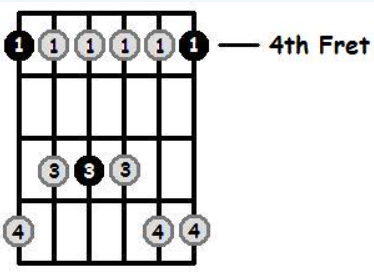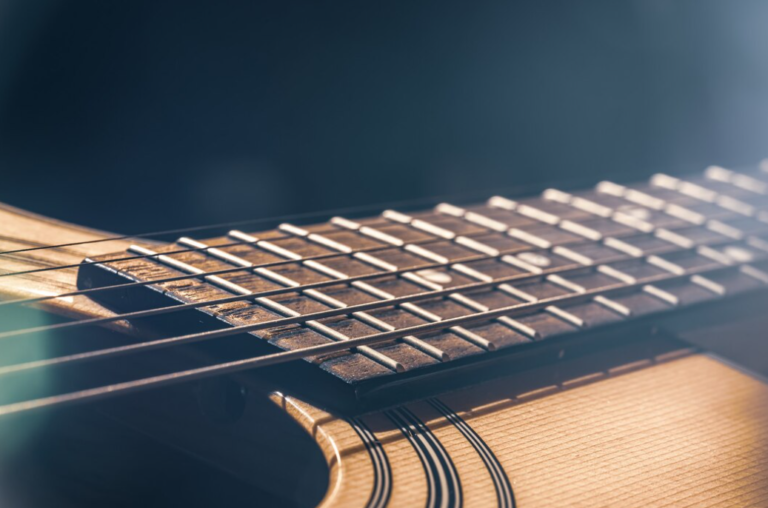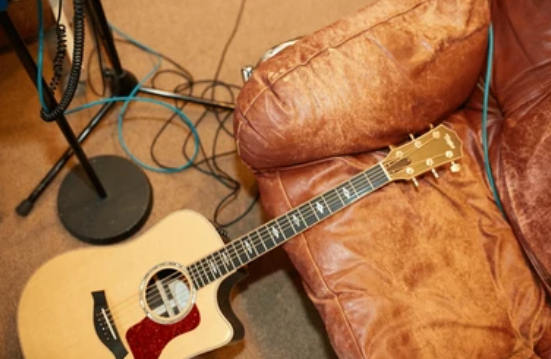Fundamentals Of The A Flat Minor Pentatonic Scale

Learning scales is a fundamental part of guitar playing, and the A Flat Minor Pentatonic Scale is a versatile and essential scale for any guitarist. Whether you’re playing rock, blues, jazz, or pop, this scale will add depth and expression to your music.
In this guide, we’ll break down how to play the A Flat Minor Pentatonic Scale, including finger positions and tips for practice.
What is the A Flat Minor Pentatonic Scale?
The A Flat Minor Pentatonic Scale consists of five notes: Ab, Cb, Db, Eb, and Gb. This scale omits the second and sixth degrees of the natural minor scale, giving it a distinct, more focused sound. The pentatonic scale is favored for its simplicity and the way it fits into various musical contexts.
Scale Diagram and Finger Positions
Here’s a common position for the A Flat Minor Pentatonic Scale on the guitar, starting at the 4th fret:
4th Position

- Start on the Root Note (Ab): Begin at the 4th fret of the low E string with your index finger. This is the note Ab.
- Move to the Cb (B): Use your pinky finger to play the 7th fret of the low E string.
- Next Note (Db): Shift to the A string, and play the 4th fret with your index finger (Db).
- Play the Eb: Use your ring finger to play the 6th fret on the A string.
- Gb on the D String: Move to the 4th fret of the D string with your index finger (Gb).
- Back to Ab: Play the 6th fret on the D string with your ring finger, which is the octave of the root note.
Tips for Practicing the Scale
- Use a Metronome: Practice the scale slowly with a metronome to ensure even timing and accuracy. Gradually increase the speed as you become more comfortable.
- Alternate Picking: Employ alternate picking (down-up-down-up) to maintain a consistent rhythm and improve your picking technique.
- Explore Different Positions: Once you’re comfortable with this position, explore other positions and patterns of the A Flat Minor Pentatonic Scale across the fretboard.
- Incorporate into Your Playing: Try integrating the scale into your solos and improvisations. Listen to how the notes interact with chords and other melodies.
- Practice with Backing Tracks: Use backing tracks in different keys and genres to practice applying the scale in a musical context.
Mastering the A Flat Minor Pentatonic Scale on guitar opens up a world of musical possibilities. With consistent practice and experimentation, you’ll find this scale to be a valuable tool in your playing arsenal. Remember to stay patient, enjoy the process, and let your creativity flow.
Happy playing!
If you’re interested in learning an instrument, at Real Brave, we offer an incredible experience like no other place in music lessons for kids and adults by guiding them from the beginning stages of getting to know an instrument all the way through performing for family and friends on stage. Our instructors come from all over the world, bringing extensive experience on a wide range of instruments. Click below and book a free lesson with us!
Author: Daniel Powers Jr, the founder of Real Brave™, serves as the chief inspiration to thousands of students in the Real Brave music instruction program. He’s also the visionary behind PracticePad™, an online platform for live one-on-one online music lessons, lesson tracking, and scheduling. Beyond his entrepreneurial pursuits, Daniel leads a non-profit organization that provides formerly homeless children with access to music education, making a profound impact on their lives. His unwavering dedication to music, innovation, and education continues to inspire individuals to reach their fullest potential while creating positive change in communities. Follow Real Brave on all the socials:
youtube.com/@realbraveinc
twitter.com/realbraveinc
https://www.tiktok.com/@realbraveinc
instagram.com/realbraveaudio
facebook.com/realbraveinc






